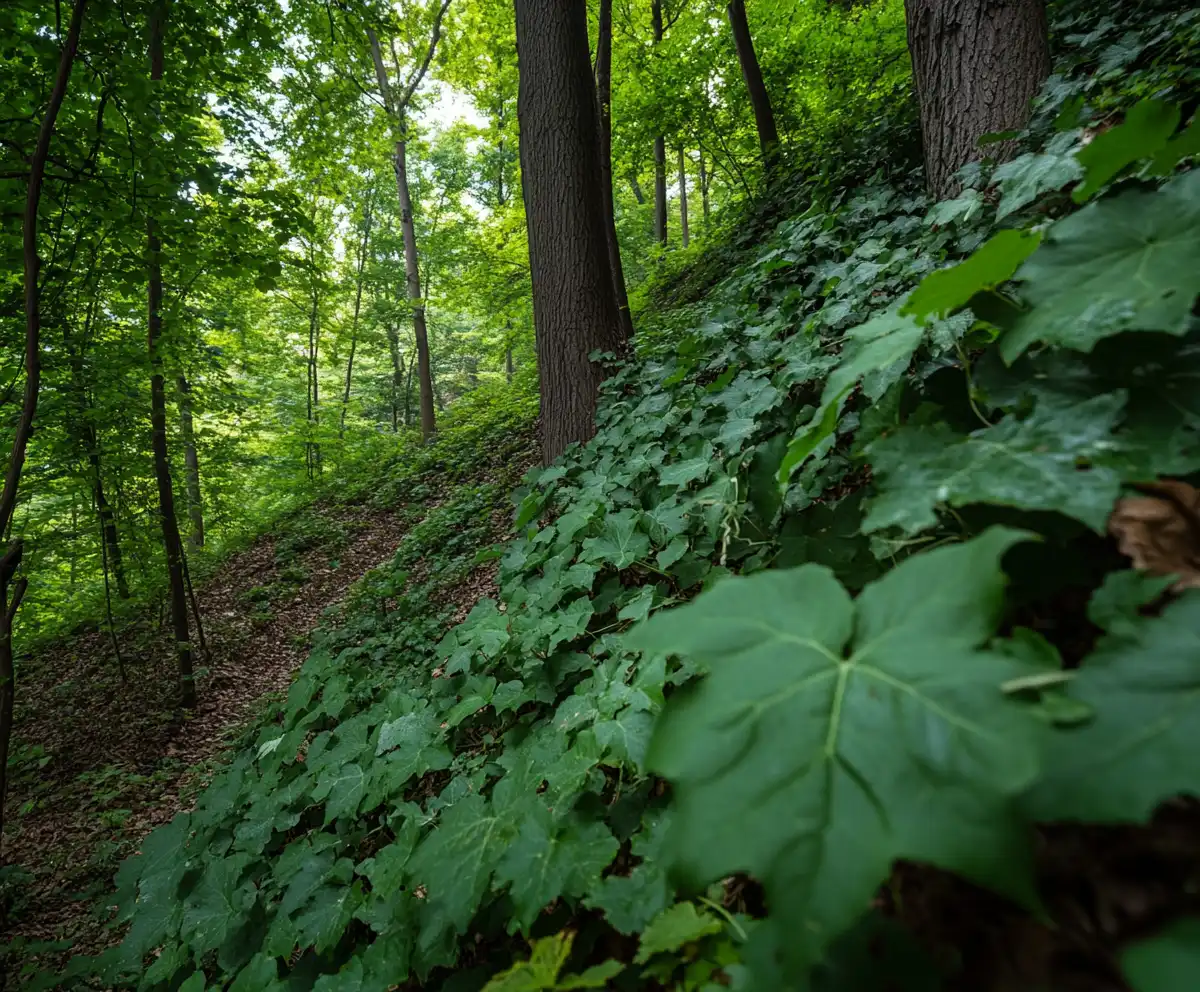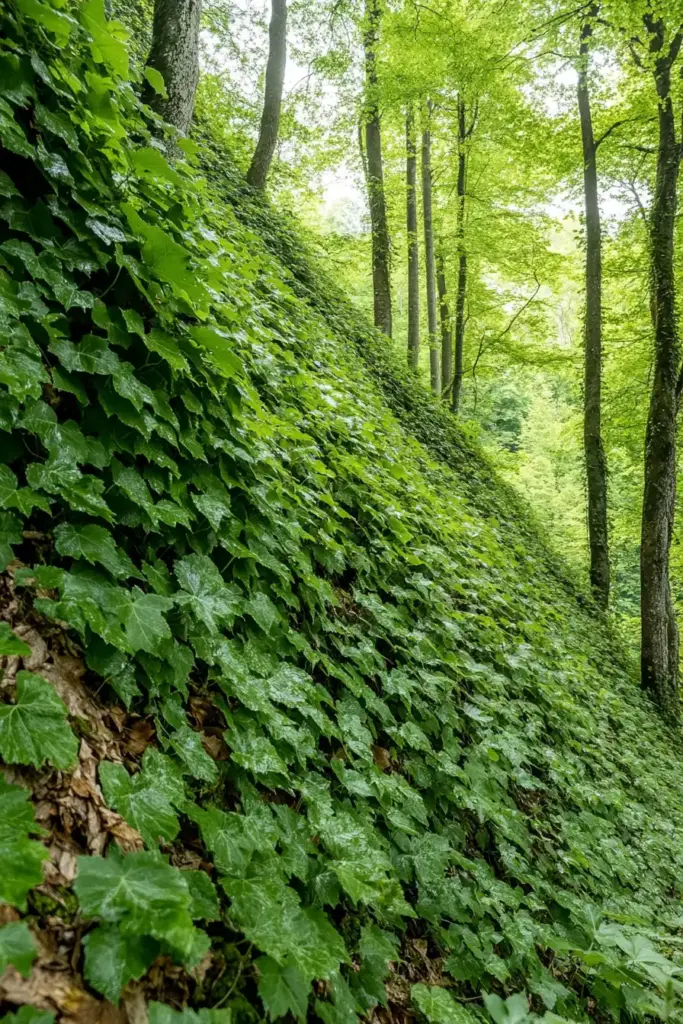Hillside landscaping presents a unique set of challenges and opportunities for gardeners. Whether you’re working with a steep slope on a budget or a gently rolling hill in your backyard, choosing the right plants can make all the difference. Not only can strategic planting help prevent erosion, but it can also transform an otherwise difficult terrain into a thriving, visually stunning garden space.
Ground cover plants are one of the smartest solutions for slopes. These low-growing heroes naturally stabilize the soil, reduce runoff, and require less maintenance than traditional turf. Even better, they bring texture, color, and year-round interest to your landscape. In this guide, we’ll introduce 12 of the best ground cover plants to make your hillside landscaping not only practical, but breathtakingly beautiful.
🌿 Love gardening inspiration? Follow me on Pinterest for bold plant ideas, tips, and seasonal color!
Table of Contents
🌿 Top 12 Ground Cover Plants for Hillside Landscaping
1. English Ivy (Hedera helix)
A classic in hillside landscaping, English Ivy is a vigorous spreader that quickly blankets bare soil with rich green foliage. This evergreen ground cover thrives in shady conditions and requires minimal maintenance once established. Its trailing vines not only hold soil in place but also climb walls and fences, adding vertical interest.
Why it works:
- Excellent for erosion control
- Ideal for shady or partially sunny slopes
- Creates a lush, evergreen carpet
Tip: Keep English Ivy in check with routine trimming—it can become invasive if left unchecked.
2. Creeping Juniper (Juniperus horizontalis)
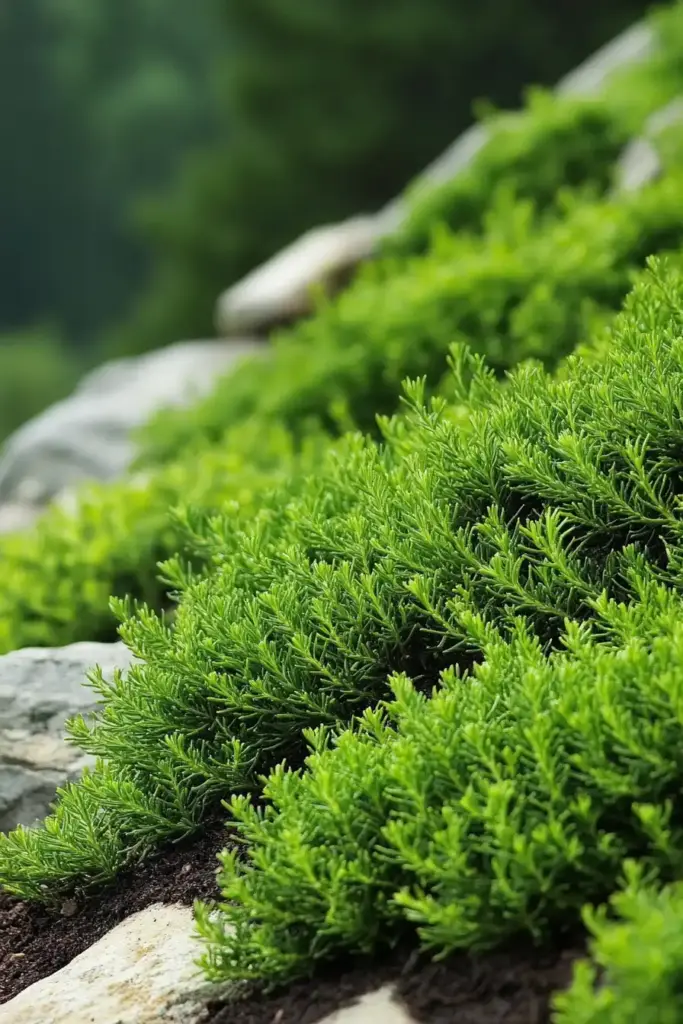
Creeping Juniper is a low-growing evergreen that thrives in full sun and well-drained soil, making it a favorite for dry, sunny hillsides. Its dense, needle-like foliage forms a tough, ground-hugging mat that resists weeds and erosion alike.
Why it works:
- Drought-tolerant once established
- Great for erosion-prone slopes
- Year-round color and coverage
Landscaping bonus: Choose from several varieties with blue-green, silver, or golden foliage.
3. Vinca Minor (Periwinkle)
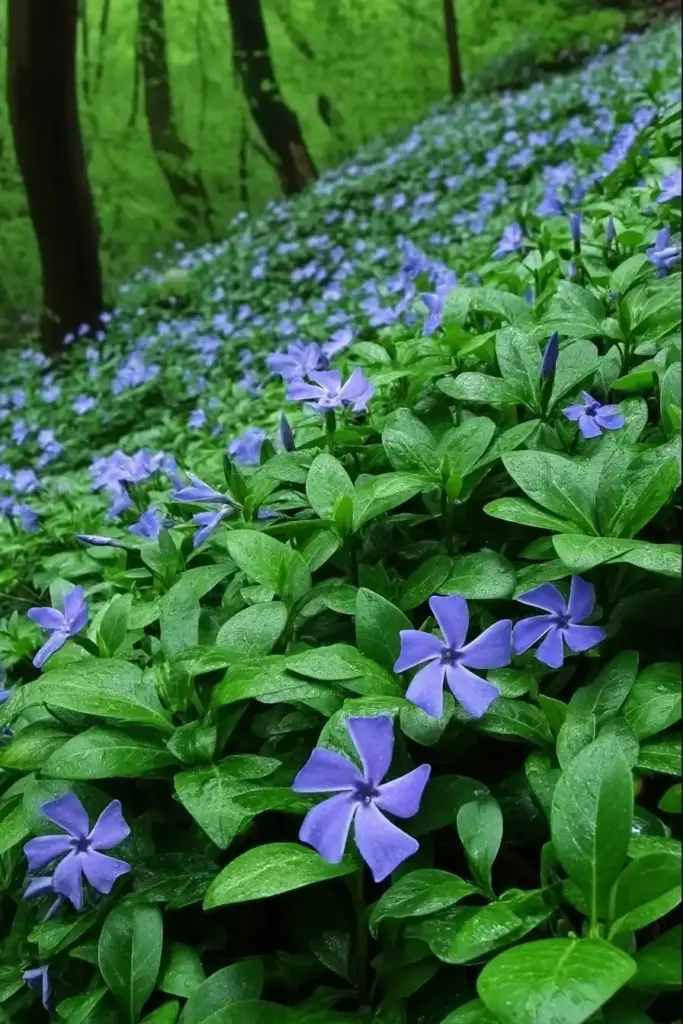
With its glossy leaves and vibrant purple-blue flowers, Vinca Minor is a shade-loving gem in hillside landscaping. This fast-spreading plant roots wherever its stems touch the ground, quickly forming a dense mat that suppresses weeds and locks in soil.
Why it works:
- Performs well on shady or partially sunny slopes
- Blooms in spring, adding seasonal color
- Low maintenance and deer-resistant
Pro tip: Avoid overwatering—this plant prefers dry to moderately moist soil.
4. Creeping Phlox (Phlox subulata)
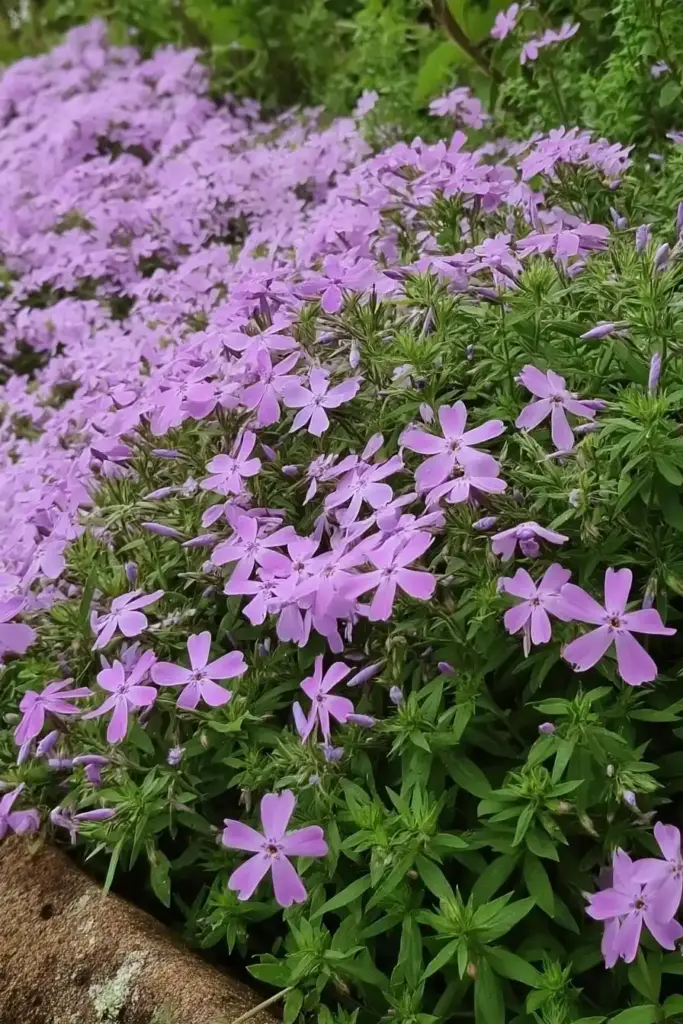
Creeping Phlox adds a burst of color in early spring with its vibrant, star-shaped blooms that cover the plant like a floral carpet. It hugs the ground tightly and spreads slowly, making it ideal for rock gardens and slopes with good drainage.
Why it works:
- Provides spring color and year-round green foliage
- Prefers full sun and well-drained soil
- Helps prevent soil erosion
Bonus appeal: Attracts pollinators like bees and butterflies.
5. Barrenwort (Epimedium)
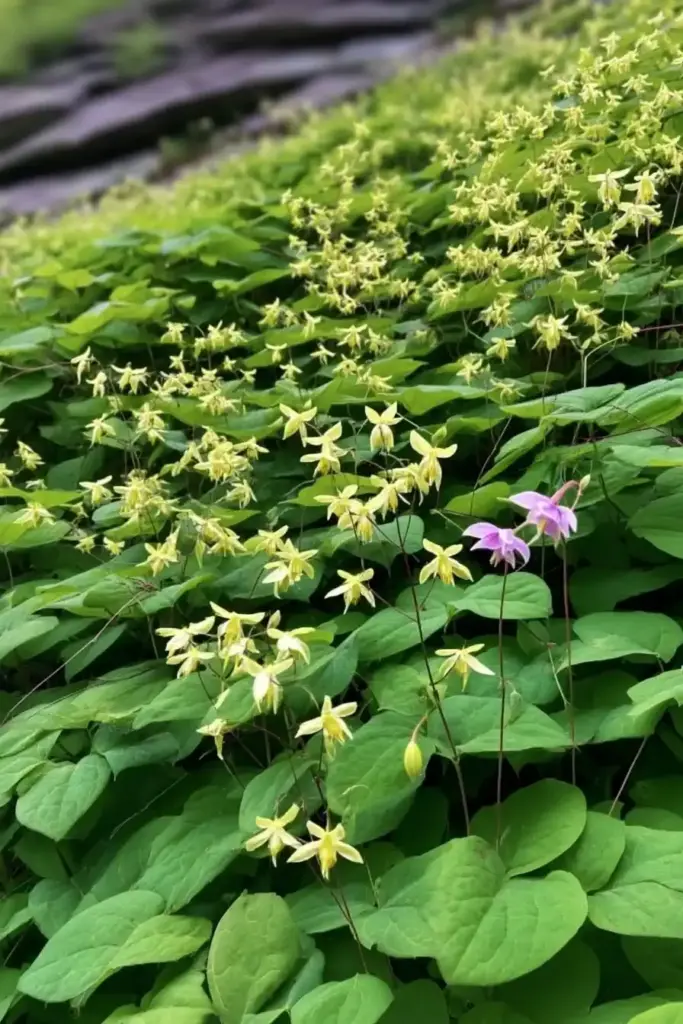
If you’re tackling a shady hillside, Barrenwort is an unsung hero. Its delicate, heart-shaped leaves and dainty spring flowers add elegance to areas where other plants struggle. Once established, it’s drought-tolerant and forms a slow-spreading, clumping mat that gently holds soil in place.
Why it works:
- Perfect for dry shade or partial shade
- Offers ornamental foliage and charming flowers
- Low maintenance and deer-resistant
Fun fact: Its foliage turns red or bronze in fall, adding seasonal interest.
6. Groundcover Roses (Rosa spp.)

For a combination of beauty and brawn in hillside landscaping, Groundcover Roses are hard to beat. These low-growing rose varieties offer cascading blooms and tough root systems that help stabilize slopes. With a wide range of colors, they can make any hillside look like a curated garden.
Why it works:
- Provides months of colorful blooms
- Deters erosion with a dense, spreading habit
- Drought-tolerant and disease-resistant varieties available
Design tip: Use them in sunny areas where you want both impact and function.
7. Lamb’s Ear (Stachys byzantina)
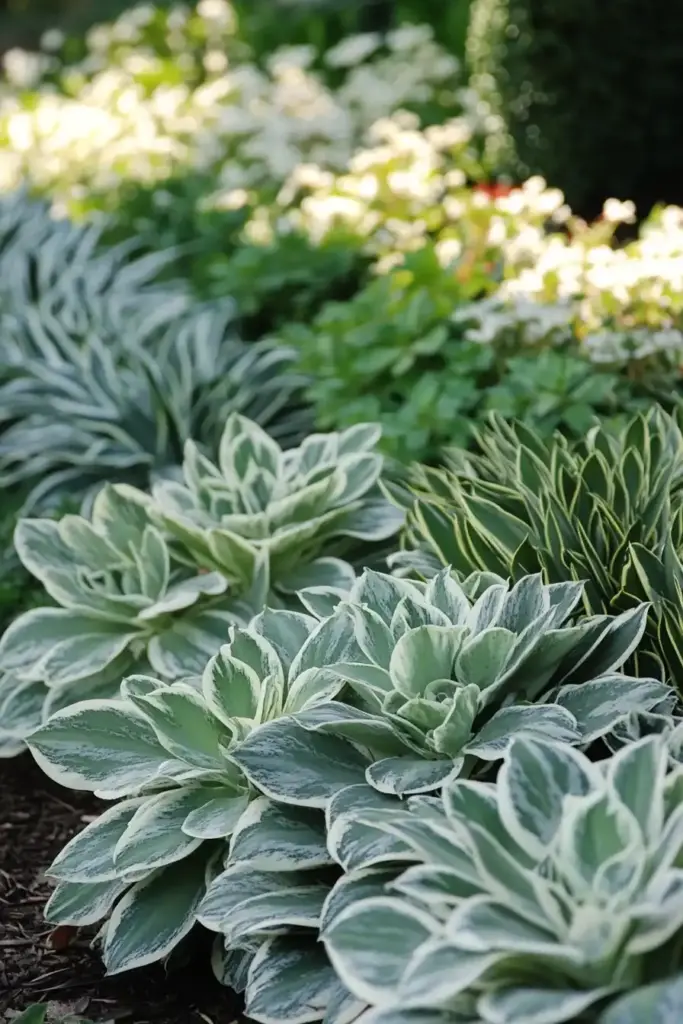
Loved for its soft, silvery foliage, Lamb’s Ear is a textural standout in hillside gardens. It thrives in hot, dry spots and requires little more than occasional trimming. Plus, its fuzzy leaves make it a favorite with kids and garden visitors alike.
Why it works:
- Thrives in full sun and poor soil
- Drought-resistant once established
- Adds soft texture and visual contrast
Maintenance tip: Cut back flower spikes to keep foliage looking neat and tidy.
8. Bishop’s Weed (Aegopodium podagraria)
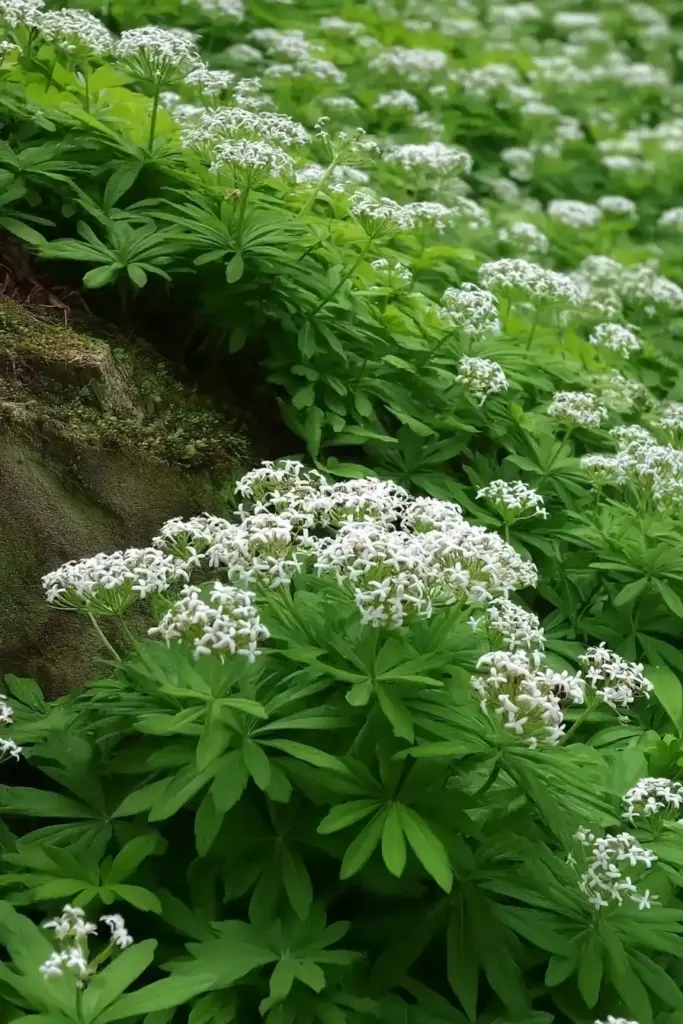
This fast-growing ground cover is ideal for quickly covering difficult slopes. With striking variegated leaves, Bishop’s Weed brings brightness to shaded areas. It spreads aggressively, so it’s best used in areas where rapid coverage is needed and boundaries are clear.
Why it works:
- Spreads fast to stabilize soil
- Adds visual interest with variegated foliage
- Tolerates poor soil and shade
Caution: Best planted in contained spaces—it can take over if not managed.
9. Cotoneaster (Cotoneaster horizontalis)
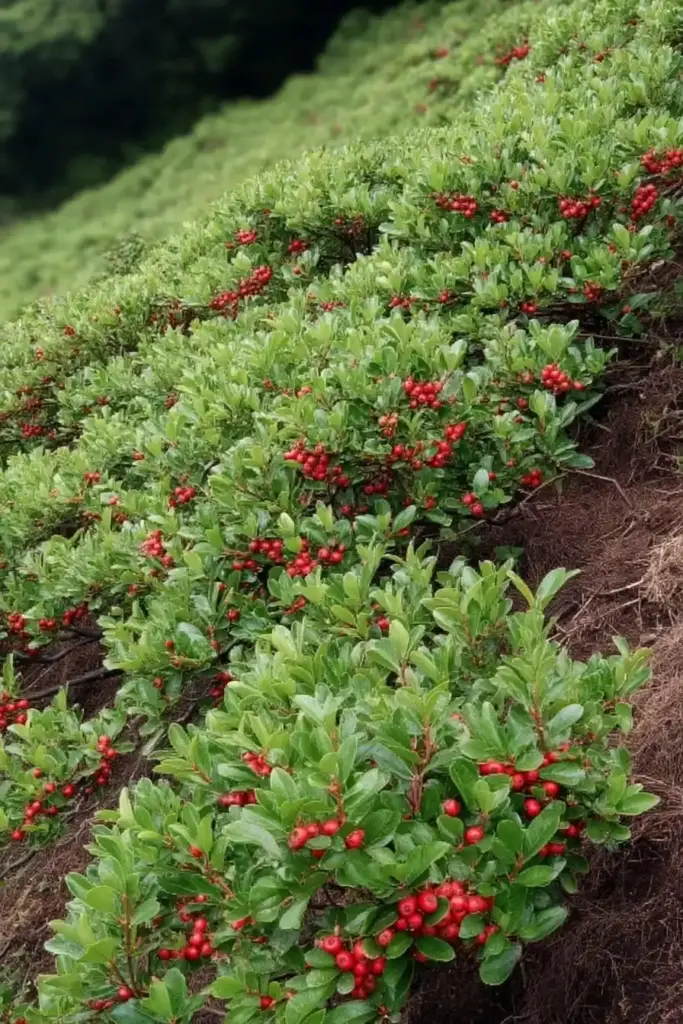
Cotoneaster brings structure and year-round appeal to sloped landscapes. This low-growing shrub features dense, spreading branches covered in small, glossy leaves, white spring flowers, and bright red berries in fall. It handles tough conditions and creates a durable, layered effect on hillsides.
Why it works:
- Excellent for erosion control
- Provides multi-season interest (flowers, berries, foliage)
- Tolerates drought and poor soil
Visual tip: Use on terraced slopes for a cascading look that adds depth and color.
10. Ajuga (Ajuga reptans, also known as Bugleweed)
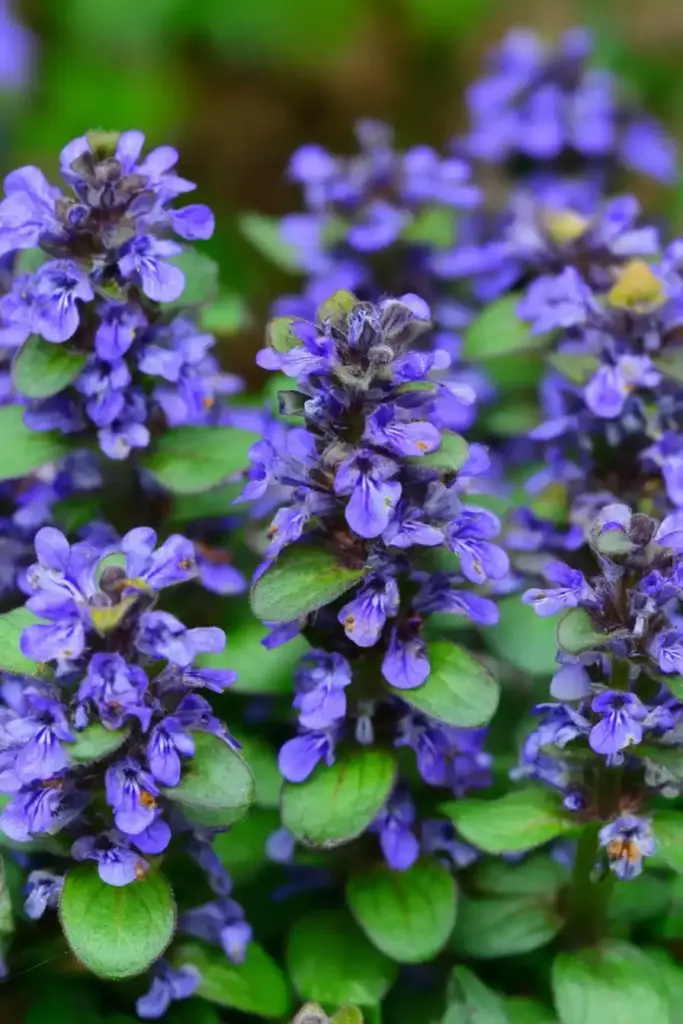
Ajuga is a fast-spreading perennial known for its bold foliage—ranging from deep purple to bronze—and dense ground coverage. In spring, it produces striking blue flower spikes that rise just above the leaves, adding vertical interest to your slope.
Why it works:
- Thrives in sun or partial shade
- Great for filling in gaps quickly
- Attracts pollinators and suppresses weeds
Care tip: Divide clumps every few years to maintain vigor and prevent overcrowding.
11. Sweet Woodruff (Galium odoratum)
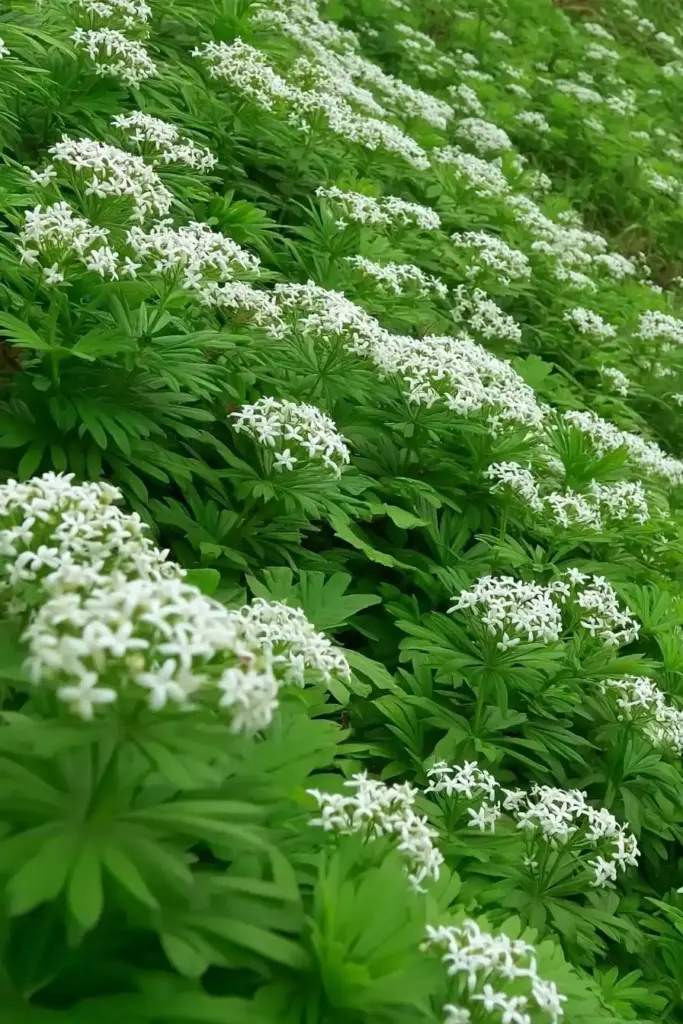
For shady, damp hillsides, Sweet Woodruff offers a fragrant, low-maintenance ground cover. Its whorled leaves and tiny, white, star-shaped flowers create a delicate woodland feel. Once it’s established, it spreads evenly without becoming aggressive.
Why it works:
- Ideal for shaded, moist slopes
- Aromatic leaves and charming spring blooms
- Low upkeep and deer-resistant
Bonus: It’s often used to make potpourri thanks to its pleasant scent.
12. Sedum (Sedum spp., commonly known as Stonecrop)
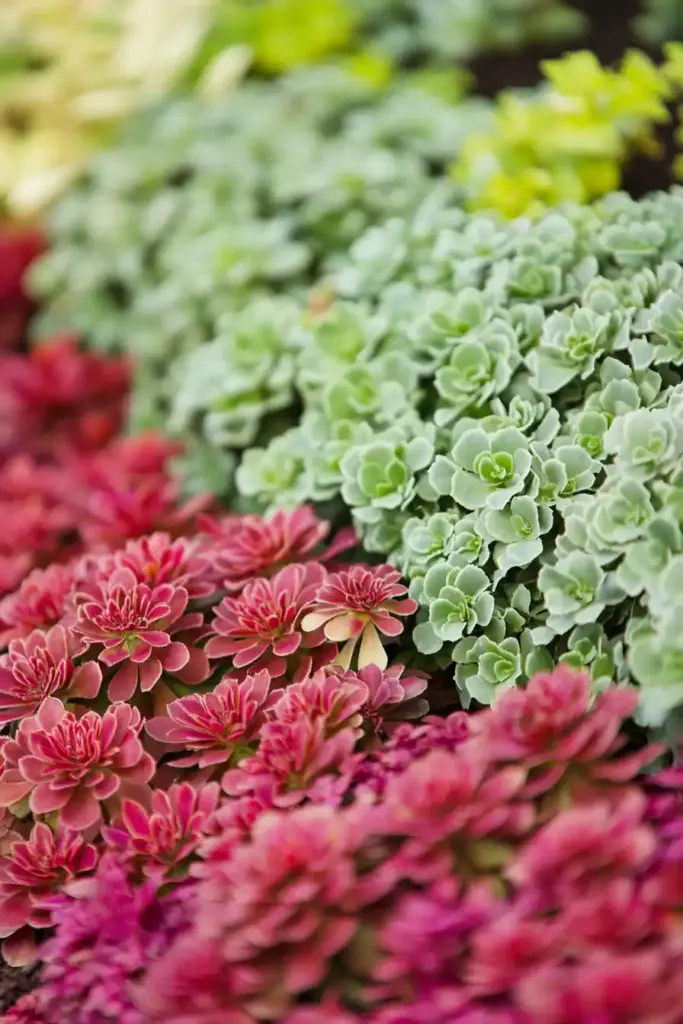
Sedums are hardy succulents that thrive in full sun and poor soil—perfect for dry, rocky slopes. Their fleshy leaves store water, making them extremely drought-tolerant, and their late-season blooms attract bees and butterflies.
Why it works:
- Requires almost no maintenance
- Great for hot, dry slopes
- Adds texture and bold color
Design tip: Mix multiple sedum varieties for a living mosaic effect on hillsides.
Conclusion
When it comes to hillside landscaping, the right ground cover plants can transform an otherwise challenging space into a thriving, visually striking part of your garden. Whether your slope is sunny or shaded, dry or moist, there’s a perfect plant—or a combination of them—to help control erosion, reduce maintenance, and enhance curb appeal.
From the vivid blooms of Creeping Phlox to the sculptural charm of Sedum, each plant we’ve covered brings its own strengths to the landscape. By choosing plants that suit your slope’s conditions, you not only create a functional design but also promote long-term sustainability.
Looking to learn more about creating low-maintenance outdoor spaces? Explore our expert guides on sun-loving garden plans, full-sun perennials, and walkable ground cover for pathways to build a landscape you’ll love year-round.
❓ Frequently Asked Questions About Hillside Landscaping
1. What is the best ground cover for hillside landscaping?
The best ground cover depends on your slope’s conditions. For sunny hillsides, Creeping Juniper, Sedum, and Cotoneaster are excellent choices. In shady areas, go for Vinca Minor, Barrenwort, or Sweet Woodruff. These plants help stabilize soil, reduce erosion, and add visual appeal.
2. How do I prevent erosion on a slope?
To prevent erosion, incorporate deep-rooted plants and fast-spreading ground covers. In hillside landscaping, combining mulch, terracing, and erosion-control plants like Ajuga, Creeping Phlox, and Groundcover Roses provides both stability and beauty.
3. Are ground cover plants low-maintenance?
Yes! Most ground covers used in hillside landscaping are low-maintenance once established. Many, like English Ivy and Lamb’s Ear, require minimal watering and pruning, making them ideal for busy gardeners or hard-to-reach slopes.
4. Can I mix multiple ground cover plants on a hillside?
Absolutely. Mixing textures, colors, and bloom times enhances the aesthetic and functional appeal of your hillside. Just ensure the plants you select have similar light and soil requirements.
5. How fast do ground cover plants grow on slopes?
Growth rates vary. Fast-spreaders like Bishop’s Weed and Vinca Minor can cover a slope within one season, while slower varieties like Barrenwort may take a couple of years. For quicker results, plant densely and provide good soil prep.

